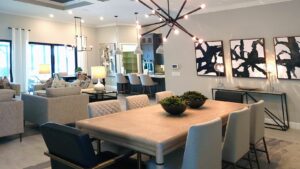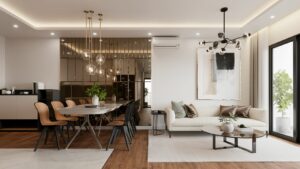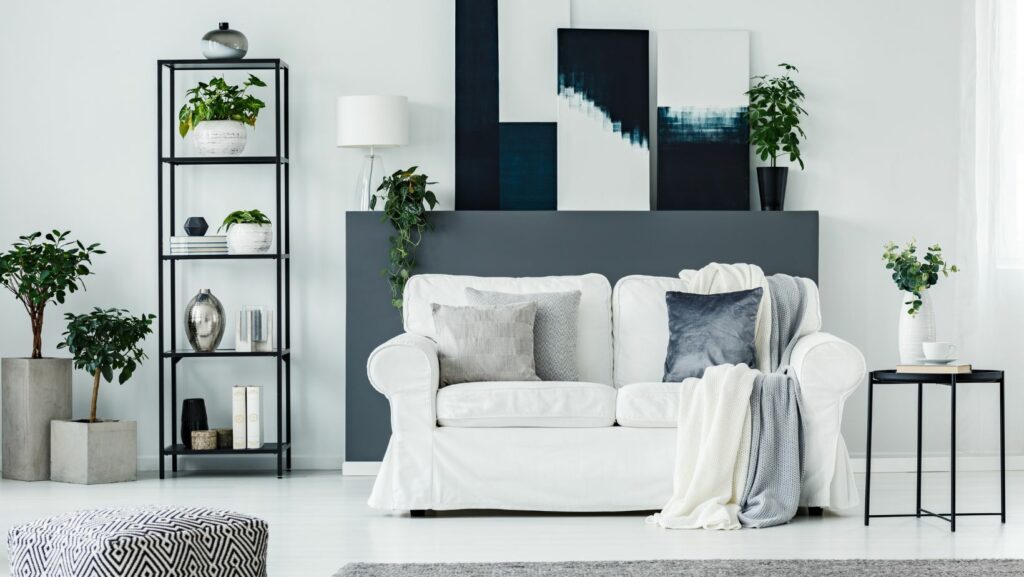Stepping into a well-designed space can evoke a range of emotions, and one key element that plays a significant role in creating visual interest is contrast. In interior design, contrast is not merely about black and white; it’s about the harmonious interplay of different elements that bring a room to life. From mixing textures and colors to blending modern and traditional styles, the art of contrast can transform a mundane room into a captivating sanctuary.
As an interior design enthusiast, I’ve always been fascinated by the power of contrast to elevate a space. It’s the secret ingredient that adds depth, personality, and a touch of drama to any room.
Contrast in Interior Design

Contrast in interior design refers to the strategic use of different elements to create visual interest and impact within a space. It involves the juxtaposition of various aspects such as colors, textures, shapes, and styles to add depth and dynamism to a room. By incorporating contrast, I can elevate the overall aesthetic appeal of a space, making it more engaging and visually stimulating. For example, pairing a sleek, modern sofa with a vintage, weathered coffee table can create a compelling contrast that catches the eye and adds character to the room.
Understanding the significance of contrast in interior design is crucial for creating a well-balanced and intriguing space. When used thoughtfully, contrast can transform a room from being ordinary to extraordinary. By introducing contrasting elements like mixing light and dark colors, soft and rough textures, or contemporary and traditional styles, I can infuse energy and personality into the design.
Types of Contrast in Interior Design
Color Contrast: Boldness and Balance
Color contrast plays a pivotal role in interior design, enhancing the visual appeal of a space through boldness and balance. When I select colors for a room, I combine contrasting hues to create a striking impact. For instance, pairing a vibrant red accent wall with neutral furniture can bring a sense of drama and sophistication to the room. By leveraging color contrast effectively, I can achieve a harmonious balance that adds depth and character to the overall design.
Texture Contrast: Mixing Materials for Impact

In interior design, texture plays a significant role in creating visual interest and tactile appeal. When I blend different textures, such as smooth leather sofas with rough-hewn wooden coffee tables, I achieve a dynamic contrast that elevates the space.
Scale Contrast: Playing with Proportions
Scale is a crucial element in interior design that influences the perceived size and proportion of furnishings within a space. When I play with scale contrast, I experiment with furniture of varying sizes to create visual intrigue. For example, pairing an oversized pendant light with a small, delicate side table can draw attention and create a focal point in the room.
Creating Contrast with Furniture and Accessories
Choosing Furniture to Enhance Room Contrast
When aiming to create contrast in interior design, selecting the right furniture pieces is crucial. Opt for items that stand out against the existing elements in the room. For example, in a predominantly light-colored space, incorporating a dark, statement piece like a bold-colored sofa can instantly introduce a striking contrast.
To enhance contrast further, consider mixing different design styles within the furniture pieces. For instance, pairing a sleek, modern coffee table with a vintage, ornate armchair can create a captivating blend of contemporary and traditional aesthetics.
Accessorizing with Intent for Maximum Effect
Accessories play a significant role in amplifying room contrast. When selecting accessories, I focus on those that complement the existing decor while introducing elements that diverge from the established theme. For example, in a room dominated by soft, organic textures, incorporating metallic accents like a chrome lamp or a gilded mirror can introduce a stark contrast that catches the eye.
To maximize the impact of accessories on contrast, I pay attention to details such as color, texture, and scale. Mixing and matching items in varying heights, textures, and colors can create a dynamic interplay that energizes the space.

